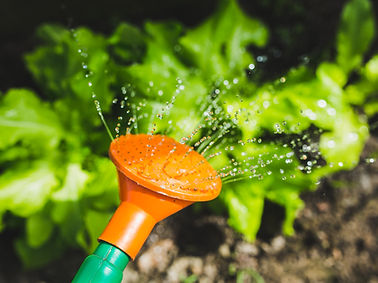
Together we can reduce food waste
We are deeply committed to reducing food waste, not just in our business but within our community. You can read about our efforts here.
By promoting mindful consumption and sustainability, we inspire our community to make small changes that collectively have a big impact.
THE DOTLINE
Reduce Waste Monthly Tip
If you haven't joined our monthly newsletter, The Dotline, yet, this is where I share insights on events, recipes, music, articles, and ways to reduce food waste. Each email concludes with a helpful tip for minimizing waste at home, along with curated articles, podcasts, and other valuable information on the topic.
If you'd like to join, simply click the button below:
too good To go
We have partnered with Too Good To Go to add the Look-Smell-Taste label on our products. What is the purpose of the label:
If the product you bought has reached its best-before date or it has even passed that date, instead of automatically throwing it out, do the following:
Look: does it look good still? Yes, go to the next.
Smell: does it smell alright? Even if not super fresh, does it smell ok still? Yes, go to the next.
Taste: give it a nibble, try a piece. Does it taste ok? Yes? So enjoy your food!
Frozen products like ours, by law, don’t require best before dates, mostly because even if it shows signs of freeze burn, the thawing or recooking process will make it look good again. While it might impact texture, it is still safe to eat. But the industry asks for best-before dates unfortunately.
Best-before dates are exactly that - a date that indicates that a product is at its PEAK freshness BEFORE a certain date. It is NOT an expiry and a product doesn’t need to be thrown out. And that is what Too Good To Go’s initiative is emphasizing and teaching. Learn more about them here.
"Look, Smell, Taste" - find this label in participating products
You will be able to find this label on our bags by mid 2025.
EGGSHELL DUST
Our Zero Food Waste project: sterilized and ground eggshells.
Our manufacturing process has always created minimal food waste, but the eggshells always bothered us, so after extensive research and tests, here we are.
About Eggshells
Chicken eggshells contain a large amount of calcium, which is a critical nutrient for all plants, their cells and roots, but whole eggshells take more than 2 years to break down and become bio-available to plants, while ground eggshells take a few months.
So how and why can you use our Eggshell Dust?
Below we explain the use of Eggshell dust for plants and how you can make it bio-available, but also the other creative ways you can use it in your day-to-day.

01 - Soil
One of the best ways for you to use eggshell dust is to mix it with compost and spread it on top of your garden/flower soil or mix it with your indoor plant soil. The eggshell dust will add calcium to the other nutrients already present in the compost. This is an organic and beautiful fertilizer.
Doing this periodically will ensure you have rich and healthy soil.
This is not an immediate solution for calcium deficiency. Read point 2 for ready-available calcium.
02 - Liquid Calcium
If you have a tomato plant needing calcium right away, you need liquid calcium and you can make that by mixing:
1 tbsp of eggshell dust + 1 tbsp of distilled vinegar
Let it foam for 30 minutes. Then add it to 1 gallon of water.
Calcium is now bio-available and you can water your plants with it.


03 - Cleaning
Eggshells are a great non-toxic abrasive cleaner.
You can clean coffee/tea stains from tumblers and white mugs by mixing eggshell dust with hot water and shaking the tumbler or letting it sit overnight in the mug.
You can use it with a bit of soap to clean your pots and pans, and you can make this potent scrubber by mixing 1 cup of eggshell dust with 3 cups of baking soda. To clean, just mix the powder with vinegar (or water). Use this formula on pots and pans (with baked-on food or the bottom of the pots), shower doors (with months of gunk), toilet bowl rings and grout.
04 - Sidewalk Chalk
Use one of these two methods to dry your chalk:
-
Wrap the log into a piece of paper towel and let it sit 3–5 days. If the chalk starts to crumble when you write with it, let the chalk sit for another day or two.
-
For a faster method, place the chalk on a small baking pan lined with parchment paper. Bake the chalk on a very low setting—150°F—for 90 minutes. Let the chalk sit for 24 hours to finish drying.
-
Take your chalk outside and start drawing!
Note: to prevent scratches, do not use this chalk on a chalkboard.

This is a fun project to do with kids!
-
Mix one teaspoon of flour and one teaspoon of hot water in a small bowl. Mix it until it's a paste.
-
Add one tablespoon of eggshell dust to your paste. Add a few drops of food colouring if you would like.
-
Mix until everything is combined. If you can't press the mixture into a log shape, add a bit more water.
-
Shape the eggshell mixture into a log shape.

05 - Feed the birds
Female birds need to eat calcium to have enough of the mineral to lay their eggs, but it can be hard to find enough of it to eat in nature.
You can mix eggshell dust with birdseed or put it on its own in a feeding tray or scattered right on the open ground.
Liked what you read and want to get some?


